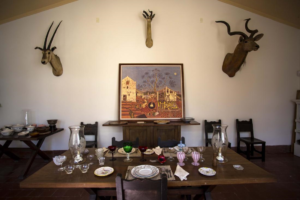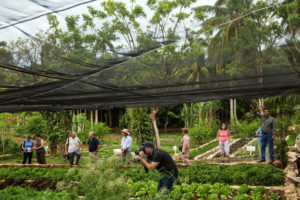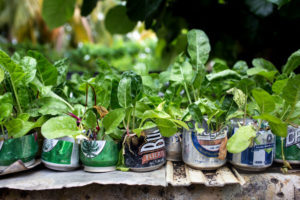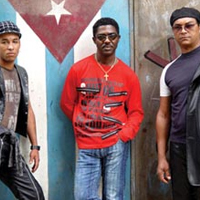Gerard Dion's Blog, page 16
July 18, 2016
Amid Weakening Economy, Cubans Fear Return to Darker Times
Dion Publishing Proudly Presents
Amid Grim Economic Forecasts, Cubans Fear a Return to Darker Times – The New York Timeso?0:o);++ru;u++)a[u].apply(i,r);var s=f[m[t]];return s&&s.push([w,t,r,i]),i}function p(e,n){g[e]=l(e).concat(n)}function l(e){return g[e]||[]}function d(e){return s[e]=s[e]||o(t)}function v(e,n){u(e,function(e,t){n=n||"feature",m[t]=n,n in f||(f[n]=[])})}var g={},m={},w={on:p,emit:t,get:d,listeners:l,context:n,buffer:v};return w}function i(){return new r}var a="nr@context",c=e("gos"),u=e(2),f={},s={},p=n.exports=o();p.backlog=f},{}],gos:[function(e,n,t){function r(e,n,t){if(o.call(e,n))return e[n];var r=t();if(Object.defineProperty&&Object.keys)try{return Object.defineProperty(e,n,{value:r,writable:!0,enumerable:!1}),r}catch(i){}return e[n]=r,r}var o=Object.prototype.hasOwnProperty;n.exports=r},{}],handle:[function(e,n,t){function r(e,n,t,r){o.buffer([e],r),o.emit(e,n,t)}var o=e("ee").get("handle");n.exports=r,r.ee=o},{}],id:[function(e,n,t){function r(e){var n=typeof e;return!e||"object"!==n&&"function"!==n?-1:e===window?0:a(e,i,function(){return o++})}var o=1,i="nr@id",a=e("gos");n.exports=r},{}],loader:[function(e,n,t){function r(){if(!b++){var e=y.info=NREUM.info,n=s.getElementsByTagName("script")[0];if(e&&e.licenseKey&&e.applicationID&&n){u(m,function(n,t){e[n]||(e[n]=t)});var t="https"===g.split(":")[0]||e.sslForHttp;y.proto=t?"https://":"http://",c(... r=s.createElement("script");r.src=y.proto+e.agent,n.parentNode.insertBefore(r,n)}}}function o(){"complete"===s.readyState&&i()}function i(){c("mark",["domContent",a()],null,"api")}function a(){return(new Date).getTime()}var c=e("handle"),u=e(2),f=window,s=f.document,p="addEventListener",l="attachEvent",d=f.XMLHttpRequest,v=d&&d.prototype;NREUM.o={ST:setTimeout,CT:clearTimeout,XHR:d,REQ:f.Request,EV:f.Event,PR:f.Promise,MO:f.MutationObserver},e(1);var g=""+location,m={beacon:"bam.nr-data.net",errorBeacon:"bam.nr-data.net",agent:"js-agent.newrelic.com/nr-952.min.js"... b=0},{}]},{},["loader"]);
// ]]>
Hannah Berkeley Cohen contributed reporting from Havana. Amid Grim Economic Forecasts, Cubans Fear a Return to Darker Times – The New York Timeso?0:o);++ru;u++)a[u].apply(i,r);var s=f[m[t]];return s&&s.push([w,t,r,i]),i}function p(e,n){g[e]=l(e).concat(n)}function l(e){return g[e]||[]}function d(e){return s[e]=s[e]||o(t)}function v(e,n){u(e,function(e,t){n=n||"feature",m[t]=n,n in f||(f[n]=[])})}var g={},m={},w={on:p,emit:t,get:d,listeners:l,context:n,buffer:v};return w}function i(){return new r}var a="nr@context",c=e("gos"),u=e(2),f={},s={},p=n.exports=o();p.backlog=f},{}],gos:[function(e,n,t){function r(e,n,t){if(o.call(e,n))return e[n];var r=t();if(Object.defineProperty&&Object.keys)try{return Object.defineProperty(e,n,{value:r,writable:!0,enumerable:!1}),r}catch(i){}return e[n]=r,r}var o=Object.prototype.hasOwnProperty;n.exports=r},{}],handle:[function(e,n,t){function r(e,n,t,r){o.buffer([e],r),o.emit(e,n,t)}var o=e("ee").get("handle");n.exports=r,r.ee=o},{}],id:[function(e,n,t){function r(e){var n=typeof e;return!e||"object"!==n&&"function"!==n?-1:e===window?0:a(e,i,function(){return o++})}var o=1,i="nr@id",a=e("gos");n.exports=r},{}],loader:[function(e,n,t){function r(){if(!b++){var e=y.info=NREUM.info,n=s.getElementsByTagName("script")[0];if(e&&e.licenseKey&&e.applicationID&&n){u(m,function(n,t){e[n]||(e[n]=t)});var t="https"===g.split(":")[0]||e.sslForHttp;y.proto=t?"https://":"http://",c(... r=s.createElement("script");r.src=y.proto+e.agent,n.parentNode.insertBefore(r,n)}}}function o(){"complete"===s.readyState&&i()}function i(){c("mark",["domContent",a()],null,"api")}function a(){return(new Date).getTime()}var c=e("handle"),u=e(2),f=window,s=f.document,p="addEventListener",l="attachEvent",d=f.XMLHttpRequest,v=d&&d.prototype;NREUM.o={ST:setTimeout,CT:clearTimeout,XHR:d,REQ:f.Request,EV:f.Event,PR:f.Promise,MO:f.MutationObserver},e(1);var g=""+location,m={beacon:"bam.nr-data.net",errorBeacon:"bam.nr-data.net",agent:"js-agent.newrelic.com/nr-952.min.js"... b=0},{}]},{},["loader"]);
// ]]>
By VICTORIA BURNETT JULY 12, 2016
Baracoa, Cuba, in January. Addressing members of Parliament last week, Cuba’s economy minister, Marino Murillo, said the country would have to cut fuel consumption by nearly a third during the second half of the year. Credit The New York Times
A version of this article appears in print on July 13, 2016, on page A1 of the New York edition with the headline: Amid Weakening Economy, Cubans Fear Return to Darker Times
Amid Grim Economic Forecasts, Cubans Fear a Return to Darker Times – The New York Timeso?0:o);++ru;u++)a[u].apply(i,r);var s=f[m[t]];return s&&s.push([w,t,r,i]),i}function p(e,n){g[e]=l(e).concat(n)}function l(e){return g[e]||[]}function d(e){return s[e]=s[e]||o(t)}function v(e,n){u(e,function(e,t){n=n||"feature",m[t]=n,n in f||(f[n]=[])})}var g={},m={},w={on:p,emit:t,get:d,listeners:l,context:n,buffer:v};return w}function i(){return new r}var a="nr@context",c=e("gos"),u=e(2),f={},s={},p=n.exports=o();p.backlog=f},{}],gos:[function(e,n,t){function r(e,n,t){if(o.call(e,n))return e[n];var r=t();if(Object.defineProperty&&Object.keys)try{return Object.defineProperty(e,n,{value:r,writable:!0,enumerable:!1}),r}catch(i){}return e[n]=r,r}var o=Object.prototype.hasOwnProperty;n.exports=r},{}],handle:[function(e,n,t){function r(e,n,t,r){o.buffer([e],r),o.emit(e,n,t)}var o=e("ee").get("handle");n.exports=r,r.ee=o},{}],id:[function(e,n,t){function r(e){var n=typeof e;return!e||"object"!==n&&"function"!==n?-1:e===window?0:a(e,i,function(){return o++})}var o=1,i="nr@id",a=e("gos");n.exports=r},{}],loader:[function(e,n,t){function r(){if(!b++){var e=y.info=NREUM.info,n=s.getElementsByTagName("script")[0];if(e&&e.licenseKey&&e.applicationID&&n){u(m,function(n,t){e[n]||(e[n]=t)});var t="https"===g.split(":")[0]||e.sslForHttp;y.proto=t?"https://":"http://",c(... r=s.createElement("script");r.src=y.proto+e.agent,n.parentNode.insertBefore(r,n)}}}function o(){"complete"===s.readyState&&i()}function i(){c("mark",["domContent",a()],null,"api")}function a(){return(new Date).getTime()}var c=e("handle"),u=e(2),f=window,s=f.document,p="addEventListener",l="attachEvent",d=f.XMLHttpRequest,v=d&&d.prototype;NREUM.o={ST:setTimeout,CT:clearTimeout,XHR:d,REQ:f.Request,EV:f.Event,PR:f.Promise,MO:f.MutationObserver},e(1);var g=""+location,m={beacon:"bam.nr-data.net",errorBeacon:"bam.nr-data.net",agent:"js-agent.newrelic.com/nr-952.min.js"... b=0},{}]},{},["loader"]);
// ]]>
MEXICO CITY — During the economic turmoil of the early 1990s, power cuts in Havana were so routine that residents called the few hours of daily electricity “lightouts.”
Now, grim economic forecasts; the crisis in its patron, Venezuela; and government warnings to save energy have stoked fears among Cubans of a return to the days when they used oil lamps to light their living rooms and walked or bicycled miles to work because there was no gasoline.
Addressing members of Parliament last week, Cuba’s economy minister, Marino Murillo, said the country would have to cut fuel consumption by nearly a third during the second half of the year and reduce state investments and imports. His comments, to a closed session, were published on Saturday by the state news media.
Amid Grim Economic Forecasts, Cubans Fear a Return to Darker Times – The New York Timeso?0:o);++ru;u++)a[u].apply(i,r);var s=f[m[t]];return s&&s.push([w,t,r,i]),i}function p(e,n){g[e]=l(e).concat(n)}function l(e){return g[e]||[]}function d(e){return s[e]=s[e]||o(t)}function v(e,n){u(e,function(e,t){n=n||"feature",m[t]=n,n in f||(f[n]=[])})}var g={},m={},w={on:p,emit:t,get:d,listeners:l,context:n,buffer:v};return w}function i(){return new r}var a="nr@context",c=e("gos"),u=e(2),f={},s={},p=n.exports=o();p.backlog=f},{}],gos:[function(e,n,t){function r(e,n,t){if(o.call(e,n))return e[n];var r=t();if(Object.defineProperty&&Object.keys)try{return Object.defineProperty(e,n,{value:r,writable:!0,enumerable:!1}),r}catch(i){}return e[n]=r,r}var o=Object.prototype.hasOwnProperty;n.exports=r},{}],handle:[function(e,n,t){function r(e,n,t,r){o.buffer([e],r),o.emit(e,n,t)}var o=e("ee").get("handle");n.exports=r,r.ee=o},{}],id:[function(e,n,t){function r(e){var n=typeof e;return!e||"object"!==n&&"function"!==n?-1:e===window?0:a(e,i,function(){return o++})}var o=1,i="nr@id",a=e("gos");n.exports=r},{}],loader:[function(e,n,t){function r(){if(!b++){var e=y.info=NREUM.info,n=s.getElementsByTagName("script")[0];if(e&&e.licenseKey&&e.applicationID&&n){u(m,function(n,t){e[n]||(e[n]=t)});var t="https"===g.split(":")[0]||e.sslForHttp;y.proto=t?"https://":"http://",c(... r=s.createElement("script");r.src=y.proto+e.agent,n.parentNode.insertBefore(r,n)}}}function o(){"complete"===s.readyState&&i()}function i(){c("mark",["domContent",a()],null,"api")}function a(){return(new Date).getTime()}var c=e("handle"),u=e(2),f=window,s=f.document,p="addEventListener",l="attachEvent",d=f.XMLHttpRequest,v=d&&d.prototype;NREUM.o={ST:setTimeout,CT:clearTimeout,XHR:d,REQ:f.Request,EV:f.Event,PR:f.Promise,MO:f.MutationObserver},e(1);var g=""+location,m={beacon:"bam.nr-data.net",errorBeacon:"bam.nr-data.net",agent:"js-agent.newrelic.com/nr-952.min.js"... b=0},{}]},{},["loader"]);
// ]]>
Cuba’s economy grew by just 1 percent in the first half of the year, compared with 4 percent last year, as export income and fuel supply to the island dropped, said Mr. Murillo.
“This has placed us in a tense economic situation,” he said.
Weak oil and nickel prices and a poor sugar harvest have contributed to Cuba’s woes, officials said. Venezuela’s economic agony has led many Cubans to wonder how much longer their oil-rich ally will continue to supply the island with crucial oil — especially if the government of President Nicolás Maduro falls.
Those fears grew last week after Mr. Murillo warned of blackouts and state workers were asked to cut their hours and sharply reduce energy use.
Amid Grim Economic Forecasts, Cubans Fear a Return to Darker Times – The New York Timeso?0:o);++ru;u++)a[u].apply(i,r);var s=f[m[t]];return s&&s.push([w,t,r,i]),i}function p(e,n){g[e]=l(e).concat(n)}function l(e){return g[e]||[]}function d(e){return s[e]=s[e]||o(t)}function v(e,n){u(e,function(e,t){n=n||"feature",m[t]=n,n in f||(f[n]=[])})}var g={},m={},w={on:p,emit:t,get:d,listeners:l,context:n,buffer:v};return w}function i(){return new r}var a="nr@context",c=e("gos"),u=e(2),f={},s={},p=n.exports=o();p.backlog=f},{}],gos:[function(e,n,t){function r(e,n,t){if(o.call(e,n))return e[n];var r=t();if(Object.defineProperty&&Object.keys)try{return Object.defineProperty(e,n,{value:r,writable:!0,enumerable:!1}),r}catch(i){}return e[n]=r,r}var o=Object.prototype.hasOwnProperty;n.exports=r},{}],handle:[function(e,n,t){function r(e,n,t,r){o.buffer([e],r),o.emit(e,n,t)}var o=e("ee").get("handle");n.exports=r,r.ee=o},{}],id:[function(e,n,t){function r(e){var n=typeof e;return!e||"object"!==n&&"function"!==n?-1:e===window?0:a(e,i,function(){return o++})}var o=1,i="nr@id",a=e("gos");n.exports=r},{}],loader:[function(e,n,t){function r(){if(!b++){var e=y.info=NREUM.info,n=s.getElementsByTagName("script")[0];if(e&&e.licenseKey&&e.applicationID&&n){u(m,function(n,t){e[n]||(e[n]=t)});var t="https"===g.split(":")[0]||e.sslForHttp;y.proto=t?"https://":"http://",c(... r=s.createElement("script");r.src=y.proto+e.agent,n.parentNode.insertBefore(r,n)}}}function o(){"complete"===s.readyState&&i()}function i(){c("mark",["domContent",a()],null,"api")}function a(){return(new Date).getTime()}var c=e("handle"),u=e(2),f=window,s=f.document,p="addEventListener",l="attachEvent",d=f.XMLHttpRequest,v=d&&d.prototype;NREUM.o={ST:setTimeout,CT:clearTimeout,XHR:d,REQ:f.Request,EV:f.Event,PR:f.Promise,MO:f.MutationObserver},e(1);var g=""+location,m={beacon:"bam.nr-data.net",errorBeacon:"bam.nr-data.net",agent:"js-agent.newrelic.com/nr-952.min.js"... b=0},{}]},{},["loader"]);
// ]]>
“We all know that it’s Venezuelan oil that keeps the lights on,” said Regina Coyula, a blogger who worked for several years for Cuban state security. “People are convinced that if Maduro falls, there will be blackouts here.”
President Raúl Castro of Cuba acknowledged those fears on Friday but said they were unfounded.
“There is speculation and rumors of an imminent collapse of our economy and a return to the acute phase of the ‘special period,’” Mr. Castro said in speech to Parliament, referring to the 1990s, when Cuba lost billions of dollars’ worth of Soviet subsidies.
“We don’t deny that there may be ill effects,” he added, “but we are in better conditions than we were then to face them.”
Amid Grim Economic Forecasts, Cubans Fear a Return to Darker Times – The New York Timeso?0:o);++ru;u++)a[u].apply(i,r);var s=f[m[t]];return s&&s.push([w,t,r,i]),i}function p(e,n){g[e]=l(e).concat(n)}function l(e){return g[e]||[]}function d(e){return s[e]=s[e]||o(t)}function v(e,n){u(e,function(e,t){n=n||"feature",m[t]=n,n in f||(f[n]=[])})}var g={},m={},w={on:p,emit:t,get:d,listeners:l,context:n,buffer:v};return w}function i(){return new r}var a="nr@context",c=e("gos"),u=e(2),f={},s={},p=n.exports=o();p.backlog=f},{}],gos:[function(e,n,t){function r(e,n,t){if(o.call(e,n))return e[n];var r=t();if(Object.defineProperty&&Object.keys)try{return Object.defineProperty(e,n,{value:r,writable:!0,enumerable:!1}),r}catch(i){}return e[n]=r,r}var o=Object.prototype.hasOwnProperty;n.exports=r},{}],handle:[function(e,n,t){function r(e,n,t,r){o.buffer([e],r),o.emit(e,n,t)}var o=e("ee").get("handle");n.exports=r,r.ee=o},{}],id:[function(e,n,t){function r(e){var n=typeof e;return!e||"object"!==n&&"function"!==n?-1:e===window?0:a(e,i,function(){return o++})}var o=1,i="nr@id",a=e("gos");n.exports=r},{}],loader:[function(e,n,t){function r(){if(!b++){var e=y.info=NREUM.info,n=s.getElementsByTagName("script")[0];if(e&&e.licenseKey&&e.applicationID&&n){u(m,function(n,t){e[n]||(e[n]=t)});var t="https"===g.split(":")[0]||e.sslForHttp;y.proto=t?"https://":"http://",c(... r=s.createElement("script");r.src=y.proto+e.agent,n.parentNode.insertBefore(r,n)}}}function o(){"complete"===s.readyState&&i()}function i(){c("mark",["domContent",a()],null,"api")}function a(){return(new Date).getTime()}var c=e("handle"),u=e(2),f=window,s=f.document,p="addEventListener",l="attachEvent",d=f.XMLHttpRequest,v=d&&d.prototype;NREUM.o={ST:setTimeout,CT:clearTimeout,XHR:d,REQ:f.Request,EV:f.Event,PR:f.Promise,MO:f.MutationObserver},e(1);var g=""+location,m={beacon:"bam.nr-data.net",errorBeacon:"bam.nr-data.net",agent:"js-agent.newrelic.com/nr-952.min.js"... b=0},{}]},{},["loader"]);
// ]]>
Mark Entwistle, a business consultant who was Canada’s ambassador to Cuba during the special period, said that despite its dependency on Venezuelan fuel, the island’s economy is now more sophisticated and diversified than it was before the Soviet collapse.
Besides, he said, Cuba has “this phenomenal social and political capacity to absorb critical changes.”
Still, some are perturbed at the prospect of power cuts. None of the Havana residents interviewed over the weekend had experienced power failures in their neighborhoods.
Amid Grim Economic Forecasts, Cubans Fear a Return to Darker Times – The New York Timeso?0:o);++ru;u++)a[u].apply(i,r);var s=f[m[t]];return s&&s.push([w,t,r,i]),i}function p(e,n){g[e]=l(e).concat(n)}function l(e){return g[e]||[]}function d(e){return s[e]=s[e]||o(t)}function v(e,n){u(e,function(e,t){n=n||"feature",m[t]=n,n in f||(f[n]=[])})}var g={},m={},w={on:p,emit:t,get:d,listeners:l,context:n,buffer:v};return w}function i(){return new r}var a="nr@context",c=e("gos"),u=e(2),f={},s={},p=n.exports=o();p.backlog=f},{}],gos:[function(e,n,t){function r(e,n,t){if(o.call(e,n))return e[n];var r=t();if(Object.defineProperty&&Object.keys)try{return Object.defineProperty(e,n,{value:r,writable:!0,enumerable:!1}),r}catch(i){}return e[n]=r,r}var o=Object.prototype.hasOwnProperty;n.exports=r},{}],handle:[function(e,n,t){function r(e,n,t,r){o.buffer([e],r),o.emit(e,n,t)}var o=e("ee").get("handle");n.exports=r,r.ee=o},{}],id:[function(e,n,t){function r(e){var n=typeof e;return!e||"object"!==n&&"function"!==n?-1:e===window?0:a(e,i,function(){return o++})}var o=1,i="nr@id",a=e("gos");n.exports=r},{}],loader:[function(e,n,t){function r(){if(!b++){var e=y.info=NREUM.info,n=s.getElementsByTagName("script")[0];if(e&&e.licenseKey&&e.applicationID&&n){u(m,function(n,t){e[n]||(e[n]=t)});var t="https"===g.split(":")[0]||e.sslForHttp;y.proto=t?"https://":"http://",c(... r=s.createElement("script");r.src=y.proto+e.agent,n.parentNode.insertBefore(r,n)}}}function o(){"complete"===s.readyState&&i()}function i(){c("mark",["domContent",a()],null,"api")}function a(){return(new Date).getTime()}var c=e("handle"),u=e(2),f=window,s=f.document,p="addEventListener",l="attachEvent",d=f.XMLHttpRequest,v=d&&d.prototype;NREUM.o={ST:setTimeout,CT:clearTimeout,XHR:d,REQ:f.Request,EV:f.Event,PR:f.Promise,MO:f.MutationObserver},e(1);var g=""+location,m={beacon:"bam.nr-data.net",errorBeacon:"bam.nr-data.net",agent:"js-agent.newrelic.com/nr-952.min.js"... b=0},{}]},{},["loader"]);
// ]]>
In an unusually blunt speech to journalists this month, Karina Marrón González, a deputy director of Granma, the official Communist Party newspaper in Cuba, warned of the risk of protests like those of August 1994, when hundreds of angry Cubans took to the streets of Havana for several hours.
Oxfam urges U.S. to end embargo on struggling Cuba
Dion Publishing Proudly Presents
Oxfam urges U.S. to end embargo on struggling Cuba | Reuters
HAVANA | By Sarah Marsh
Oxfam urges U.S. to end embargo on struggling Cuba | Reuters

Oxfam Executive Director Winnie Byanyima speaks during an interview in Havana, Cuba July 13, 2016. Picture taken July 13, 2016.
Reuters/Alexandre Meneghini
Oxfam urges U.S. to end embargo on struggling Cuba | Reuters
The director of Oxfam broke the global aid agency’s longtime silence on the U.S. trade embargo on Cuba, urging the American Congress to lift it “sooner rather than later” given the island’s mounting economic woes.
Winnie Byanyima said in an interview in Havana that Oxfam was set to formally campaign against the embargo as part of its broader strategy to increase support to Cuba.
President Raul Castro told Cubans last week to brace for tough times as the country had to cut spending and energy supply as it dealt with a cash crunch and reduced oil assistance from socialist ally Venezuela.
“Cuba needs to engage in the global economy and the embargo cuts them out,” Byanyima said. “We are going to be calling for a lifting of that embargo and normalizing relations sooner rather than later,” she said on Wednesday.
The United States slapped a trade embargo on its southern neighbor after the 1959 revolution that toppled a U.S.-backed dictator. Cuba estimates the embargo has caused $121 billion in damage to its economy.
U.S. President Barack Obama restored diplomatic relations with Cuba and would like to lift the embargo but faces opposition from the Republican-controlled Congress.
The Oxfam director added Cuba must also carry on with its reform agenda to update its Soviet-style command economy. She applauded the fact the country had become more self-critical.
Byanyima said she was visiting Cuba to see how Oxfam could adapt its work in response to the island’s growing difficulties.
“We can’t keep doing what we always did when their problems multiply,” she said.
Oxfam is working mainly in the eastern part of the country, on projects to tackle drought, increase farming output and empower women in rural areas.
A key issue is that, despite being a tropical country, Cuba imports 80 percent of its food, partly due to a decline in productivity when farms were nationalized after the revolution, said Byanyima.
As part of its market-style reforms, Cuba is leasing out land to smallholder farmers, helping increase output and local incomes. Yet many Cubans have lost their farming know-how.
“They have lost maybe two, three or four generations of agriculture culture, so there is a need to build up again this knowledge amongst families for smallholder farming,” she said, noting Oxfam had strong experience transmitting that knowledge from farmers throughout the world.
Byanyima lauded Cuba as a “very equal society”, which performed well on social indicators such as housing, maternal mortality and access to education. Yet it was right to remain vigilant about creeping inequality as it opened up the economy.
July 10, 2016
Green Light For Credit Cards In Cuba
Dion Publishing Company presents CUBA NOW by David Gomez
Political Director, #CubaNow
Green Light For Credit Cards In Cuba
Despite Criticism From Pro-Embargo Lobby, Americans Clear To Use Credit Cards In Cuba. “U.S. residents who travel to Cuba will be able to use a MasterCard issued by Florida-based Stonegate, the bank announced this month. But what happens if they use the card in a hotel owned by the Cuban military or a property seized by the Cuban government from U.S. owners in the 1960s? For now, nothing. Since January 2015, the Obama administration has allowed U.S. visitors to use credit and debit cards in Cuba. One day before President Barack Obama arrived in Havana March 20, the administration also licensed Starwood hotels to administer two Cuban hotels and spend money remodeling them.” [Miami Herald, “U.S. policy for credit cards in Cuba too lenient, critics say,” 6/27/16]
Treasury Department: Use Of Credit Cards By Authorized Travelers In Cuba Not Subject To Section 103 Prohibitions. “A Treasury statement sent to el Nuevo Herald said its Office of Foreign Assets Control ‘does not consider the use of credit cards by authorized travelers in Cuba to be transactions subject to the prohibition in Section 103.’ Pedro Freyre, a lawyer at Miami-based Ackerman Senterfitt who advises companies interested in doing business in Cuba, said the administration’s interpretation of Section 103 ‘is the correct one.’ ‘I believe that Congress did not intend to limit credit card transactions to authorized travel,’ he said. ‘If you go to the law itself, in the definition of trafficking [with confiscated properties] there is a specific exemption for travel-related transactions. That indicates the intent of Congress when it approved the law.’” [Miami Herald, “U.S. policy for credit cards in Cuba too lenient, critics say,” 6/27/16]
Cuba OKs MasterCard At Havana ATMs. “Starting this week, Havana ATMs are accepting MasterCard cash advances, including those from Stonegate Bank, the first U.S. bank authorized to provide this service on the communist island, and the Banco Popular de Puerto Rico. The Cuban Central Bank’s vice president Irma Margarita Martinez confirmed Monday that MasterCard is already being accepted at Cuban sales points along with Visa cards, which have been authorized on the island for some time. ‘That possibility is starting now that the pending financial and legal issues have been resolved and thanks to the efforts of the Cuban entities tasked with processing MasterCard and the foreign provider who is facilitating the handling of its operations for us,’ she said in a BCC communique made available to the press.” [Fox News Latino, “Cuba gives green light to MasterCard at Havana ATMs,” 6/28/16]
July 6, 2016
Cuba plans cuts in fuel, electricity consumption
Dion publishing Company presents
HAVANA | By Marc Frank

A general view of Havana July 26, 2011.
Reuters/Desmond Boylan
Cuba has ordered some state firms and joint ventures to reduce fuel and electricity consumption, a senior diplomat and the director of a foreign joint venture said on Thursday, in the latest sign a crisis in ally Venezuela is hurting the economy.
While it was not clear exactly what triggered the cuts, Cuba’s President Raul Castro warned in December that the economy would go through a rough patch in 2016, citing the impact of low oil prices on the trade relationship with Venezuela.
Cuba has a history of energy rationing, especially in the 1990s after the collapse of the Soviet Union, when the Communist government struggled to survive under a severe U.S. embargo. The current restrictions will not be so severe, but they come at a time when Cubans’ expectations are higher thanks to the detente with Washington and economic reforms.
The extent of the rationing, which is expected to take effect in July and be announced next week at a session of the National Assembly, is expected to depend on the sector but there are signs some of the belt-tightening could be quite sharp.
“I saw a copy of the Economy Ministry instructions to the state oil and electricity monopolies yesterday; it stated quotas would be reduced up to 50 percent through the end of the year,” the foreign director of a joint venture said on condition of anonymity.
“I called the ministry that supervises our company and they said the level of cuts to our sector were still under discussion,” he said.
A statement issued by the Council of Ministers earlier this week said Economy Minister Marino Murillo explained to members the country’s economic situation and restrictions being adopted for the rest of the year, without giving details.
“He clarified that those activities that maintain the vitality of the country, in particular those that generate (hard currency) earnings and substitute imports, will be guaranteed,” it said, providing no further details.
Low oil prices have taken Venezuela to the brink of economic collapse and destabilized its leftist government, which ships Cuba 90,000 barrels of oil per day as part of an exchange that sends tens of thousands of Cuban professionals to Venezuela.
So far Venezuela seems to be meeting its oil commitments to Cuba although cash payments for doctors and other Cuban professionals have dried up in the past 18 months, experts say.
“There does not seem to have been a cutback in crude oil and or petroleum products deliveries by Venezuela to Cuba, according to marine traffic reports,” Jorge Pinon, director of the Latin America and Caribbean Energy Program at the University of Texas, said.
“They may be expecting one in the future, building inventories or simply trying to save money or trying to insure there are no blackouts for residents as electricity demand increases,” he said.
Several Western diplomats in Cuba said they received a stream of reports over the last two weeks that the government would cut fuel and electricity quotas to state companies.
“The Cubans are clearly way behind in paying some of our suppliers and now we have these cuts on the horizon,” said one commercial attaché who asked not to be identified because of diplomatic sensitivities.
Cuba began cutting back on merchandise imports last year and has been slow in making some payments to creditors and suppliers.
“It is obvious all this has to do with the crisis in Venezuela,” he said.
Cuban President Raul Castro told a year-end session of the National Assembly in December that economic growth would slow from 4 percent in 2015 to 2 percent in 2016 due to falling export revenues.
Castro said that lower oil prices had reduced the cost of a number of imports such as food but also hurt “mutually advantageous cooperation relations with various (oil-producing) countries, in particular the Bolivarian Republic of Venezuela.”
(Reporting by Marc Frank; editing by Frank Jack Daniel and Richard Chang)
July 5, 2016
‘The Totalitarian Regime Is Intact’: One Cuban’s Message to Obama
Dion Publishing Company presents Rosa Maria Paya on Obama’s Opening to Cuba – The Atlantic

Ofelia Acevedo, wife of Oswaldo Paya, one of Cuba’s best-known dissidents, is comforted by a priest near the tomb of her husband after his burial in Havana July 24, 2012. Paya, leader of the Christian Liberation Movement, died on Sunday in a car crash, government and opposition sources said. Another dissident died in the crash, and a Spaniard and Swede were injured, after the car left the road and hit a tree, government officials told Reuters. REUTERS/Stringer (CUBA – Tags: POLITICS OBITUARY) – RTR359TA
The U.S. is pressing ahead with its opening to Cuba. What does that mean for democracy on the island?
The Totalitarian Regime Is Intact’: One Cuban’s Message to Obama
Global News
Earlier this month, Ben Rhodes, the architect of Barack Obama’s diplomatic opening to Cuba, characterized the full restoration of U.S.-Cuban relations—in other words, Congress lifting the U.S. travel ban and trade embargo against the island—as inevitable and imminent. It would be the next domino to fall after the first U.S. presidential visit to Cuba in 88 years, the first authorization of commercial flights from America to Cuba in five decades, the first sales of Cuban coffee to the U.S. market, and so on.
“The fact of the matter is that the American people and the Cuban people overwhelmingly want this to happen,” Rhodes said. “Frankly, whatever the political realities in either country, for somebody to try to turn this off, they would have to be working against the overwhelming desires of their own people.”
As the Obama administration seeks to cement one of its principal foreign-policy achievements, it’s worth pausing to unpack that complex word: “desire.” Rhodes is right that the majority of Americans and Cubans support re-establishing ties between the two nations. Yet most Americans and Cubans don’t think re-established ties will bring more democracy to Cuba’s one-party state. In one 2015 poll, just over 50 percent of Cubans said they were dissatisfied with the country’s political system and wanted more political parties than the Castros’ Communist Party. But roughly the same percentage didn’t think their country’s new relationship with the United States would change the Cuban political system (Cubans were more likely to anticipate change in their widely despised economic system). They desire normal relations with America. But many also desire democracy. And they don’t expect the former to lead to the latter.
For Rosa Maria Paya, such an outcome is patently unacceptable. Paya is the daughter of Oswaldo Paya, a Cuban democracy activist who in 2012 was killed in a mysterious car crash that official accounts labeled an accident, but that Paya’s family, and the driver of the car, have condemned as a brazen assassination by the Castro regime. Paya is 27 years old, a recent college graduate who studied physics like her father and relocated from Havana to Miami after his death; she’s part of a generation of Cubans that is especially supportive of democracy, the United States, and emigration from Cuba. And Paya is an activist in her own right, continuing her father’s campaign for a national plebiscite on whether to overhaul Cuba’s political system.
Paya cannot be counted among the “overwhelming” number of Cubans who, according to Rhodes, are enthusiastic about Obama’s Cuba policy. She is not as quick as Rhodes to downplay the “political realities” in her country. At the Human Rights Foundation’s Oslo Freedom Forum in Norway, she offered sobering and, at times, searing commentary on what the Obama administration’s outreach to Cuba has produced—and, critically, what it hasn’t.
McCaul: When you vote, ask yourself if you feel safer
When you vote, ask yourself if you feel safer Washington Examiner <img height=”1″ width=”1″ style=”display:none” src=”https://www.facebook.com/tr?id=224132...″ />
By Cassi Pollock • 7/3/16 12:01 AM
McCaul: When you vote, ask yourself if you feel safer | Washington Examiner <img height=”1″ width=”1″ style=”display:none” src=”https://www.facebook.com/tr?id=224132...″ />
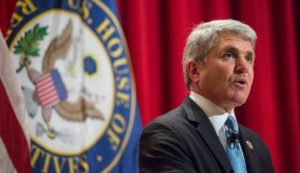
Citing the attacks in San Bernardino, Calif., and Orlando, Fla., Rep. Michael McCaul, a Texas Republican, said the threat isn’t going away. (Graeme Jennings/Washington Examiner)
Citing the attacks in San Bernardino, Calif., and Orlando, Fla., Rep. Michael McCaul, a Texas Republican, said the threat isn’t going away. (Graeme Jennings/Washington Examiner)
McCaul: When you vote, ask yourself if you feel safer
By Cassi Pollock • 7/3/16 12:01 AM
Rep. Michael McCaul, a Texas Republican who came to Washington in 2005 and rose to chairman of the House Homeland Security Committee in 2013, believes Americans will be asking a simple question before they vote this year.
“Do you feel safer than you did before?” McCaul told the Washington Examiner. “Most people would say, ‘No, I don’t.'”
America’s national security has fallen behind significantly since President Obama took office, said McCaul, who previously served as Texas’ deputy attorney general and as the U.S. attorney general’s chief of counterterrorism and national security.
Citing the attacks in San Bernardino, Calif., and Orlando, Fla., McCaul said the threat isn’t going away. “I wish it would, but it’s not going away in my lifetime. I just hope it goes away in my children’s lifetime.”
Subscribe today to get intelligence and analysis on defense and national security issues in your Inbox each weekday morning from veteran journalists Jamie McIntyre and Jacqueline Klimas.
Though he said that prospect should deter Americans from voting for Hillary Clinton in the presidential election this fall, he also has yet to endorse Donald Trump, who McCaul said will need guidance on national security and foreign affairs. “I don’t think that’s his particular strength right now, but I think it can be with the right team around him,” McCaul said.
He also voiced frustration with Cuba, which in June denied visa applications from McCaul and several other lawmakers who were seeking to inspect suspected lackluster security at the country’s airports. The island nation, which sits 90 miles off the coast of Florida, is set to begin sending 110 daily flights into the U.S. this fall.
“This whole let’s open Cuba up to everybody — well, they just denied the chairman of the Homeland Security Committee access to Cuba,” McCaul said.
Washington Examiner: The president has been pushing for gun control in the wake of the Orlando shooting. If you were president, what would have been your response to Orlando?
McCaul: First, I would have acknowledged what it was, and that’s the impact of radical Islamist extremism in the United States and the threat that’s very real to Americans. The president did the right thing by going to Orlando personally and grieving with the victims. That was probably the deadliest attack since 9/11.
In ‘Historic Moment,’ Cuba Opens First U.S.-Operated Hotel
Dion publishing proudly presents NBC News Business
Jun 28 2016, 6:59 am ET by Reuters
large “Four Points by Sheraton” sign has gone up outside the Havana hotel that this week becomes the first in Cuba to operate under a U.S. brand since the 1959 revolution.
The military-owned Gaviota 5th Avenue Hotel, close to the Caribbean seafront, is one of two hotels that Starwood Hotels & Resorts Worldwide agreed to manage in a multimillion-dollar deal with Cuba in March.
&lt;img class=”img-responsive img_inline” src=”http://media2.s-nbcnews.com/j/newscms...” alt=”U.S. President Barack Obama and Cuba&amp;#x27;s President Raul Castro meet in Havana” title=”U.S. President Barack Obama and Cuba&amp;#x27;s President Raul Castro meet in Havana” itemprop=”image”/&gt;
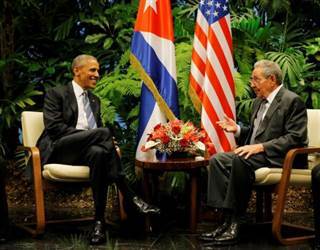
U.S. President Barack Obama and Cuba’s President Raul Castro hold their first meeting on the second day of Obama’s visit to Cuba, in Havana March 21, 2016. REUTERS/Carlos Barria
For decades, such arrangements have been prohibited under the U.S. economic embargo of the Communist-ruled island. But while the embargo remains in place, the Obama administration has loosened restrictions on trade and investment since it announced a detente with Cuba in December 2014.
“This is a historic moment,” said Nancy Sarabia, public relations manager for the hotel, adding that the official inauguration would take place on Tuesday. She called the hotel “a symbol of brotherhood and collaboration.”
Starwood is the first U.S. company to commit major money to Cuba since Fidel Castro and his bearded rebels overthrew a pro-American government on Jan. 1, 1959.
The company said it would not close the 5th Avenue Hotel while it refurbished it, a process that would take several months. Workers were re-painting the lobby on Monday.
According to Starwood’s website, it will start operating state-owned Gran Caribe Inglaterra Hotel under its Luxury Collection brand on Aug. 31.
U.S. President Barack Obama has called the embargo a failure and Washington is increasingly issuing special permissions to companies to do business with Cuba.
Florida-based Stonegate Bank has received permission to issue credit cards for use in Cuba. On Monday, Cuba confirmed these could be used to withdraw cash in the country.
These examples remain exceptions to the rule. Only the U.S. Congress can completely remove the Cuba embargo, and the Republican majority leadership wants it in place as long as Cuba’s one-party state represses domestic political opponents and holds a media monopoly.
Many U.S. business executives see Cuba as a missed opportunity and have stepped up interest since the detente. Among those are U.S. hotel chain executives, keen to get in on Cuba’s recent tourism boom.
Cuba had 1.5 million tourists visit in the first four months of 2016, up 13.5 percent from a year earlier, partly due to relaxed U.S. travel restrictions.
Those numbers are expected to balloon if the United States lifts its travel ban altogether.
At Gaviota 5th Avenue Hotel, bookings are already unavailable for several future dates, with rooms going for nearly $200 a night.
Castro nationalized the tourism industry after the revolution, but since then, Cuba has struck joint venture deals with several foreign hotel operators.
June 28, 2016
WORLD CUBA Cuba Receives U.S. Hardware to Help Preserve Hemingway’s Havana Estate
Dion Publishing Company Proudly Presents
Cuba Receives U.S. Hardware to Help Preserve Hemingway’s Havana Estate
Desmond Boylan—APU.S. writer Ernest Hemingway’s dining room is on display at Finca Vigia, his home in Havana, Cuba, Wednesday, June 15, 2016
A $900,000 conservation project is underway
noon outside Ernest Hemingway’s Havana estate, a metallic screech cut through the chirping of tropical birds and the sound of a live band entertaining tourists.
An American worker pulled open one door of a 40-foot shipping container. A Cuban worker pulled open the other. Out spilled treasure: box after box of U.S.-bought tools and hardware, from electric fuse boxes to hurricane-proof windows.
On an island where finding a handful of screws can be a days-long odyssey, the new era of U.S.-Cuban normalization has brought hundreds of thousands of dollars of supplies to build a simple but up-to-date conservation facility for Hemingway artifacts ranging from books and letters to fishing rods and African animal heads.
ADVERTISING
The opening of two containers on Wednesday was far from the most momentous event in the year and a half since Presidents Barack Obama and Raul Castro declared detente. But there was a symbolic charge to the unpacking of American goods that will be used to preserve the memories of a man who’s become an icon of friendly U.S.-Cuban relations. Hemingway lived at the airy home known as the Finca Vigia in the 1940s and ’50s, and places where the Nobel literature laureate worked, fished and drank have become important Cuban cultural sites and draws for tourists from around the world.
The home fell into disrepair over a half century of Cold War between the U.S. and Cuba, which suffers under both a U.S. trade embargo and the self-imposed problems of an inefficient and unproductive centrally planned economy.
“Preserving Hemingway’s legacy brings honor and dignity to North Americans and Cubans alike,” said Ada Rosa Alfonso, head of the Finca Vigia museum.
The goods unpacked Wednesday will be used to complete the first stage of the conservation facility that should be finished in the spring of 2017, said Mary-Jo Adams, director of the Boston-based Finca Vigia Foundation, which raised nearly $900,000 for the project.
When he died in 1961, Hemingway left approximately 5,000 photos, 10,000 letters and hundreds, perhaps thousands of margin notes in the roughly 9,000 books at the Finca Vigia. Most are stored in the decaying, termite-infested basement of a guest house on the estate, but will be moved to the new facility as soon as possible, Adams said.
“This is where he kept the objects that he loved, and where they reside,” she said.
Alfonso said the Finca Vigia could become a model for other historic preservation projects in Cuba, which has struggled to find the resources to protect centuries of globally renowned architecture and art.
She said it was thrilling to see the containers unpacked after years of trying to preserve Hemingway’s home without state-of-the-art supplies or equipment.
“I really feel the fact of having the best materials, the tools, really having the best conditions to continue preserving the collection,” she said. “Material and tools coming from the United States isn’t something you see every day.”
A Rush of Americans, Seeking Gold in Cuban Soil
For the group of organic true believers who traveled here in May, the dream is to help Cuba stay loyal to a sustainable style of agriculture that rejects chemicals and genetic modification. They point to an incentive: an American market hungry — and willing to pay a premium — for organic produce.
Dion Publishing Proudly presents New York Times
By KIM SEVERSONJUNE 20, 2016
The premier organic farm in Cuba, called Finca Marta, is in the countryside, a half-hour’s drive from Havana. Some 25 different crops are grown in a system of tiered beds. The black screen protects the plants from the tropical sun. Credit Lisette Poole for The New York Times
HAVANA — Being an agricultural official in Cuba these days is like living in a resort town all your friends want to visit. You rarely get a moment to yourself.
For months, Havana’s government offices and its prettiest urban farms have been filled with American bureaucrats, seed sellers, food company executives and farmers who spend their evenings eating meals made with ingredients often imported or smuggled into restaurants that most Cubans can’t afford.
They seek the prizes that are likely to come if the United States ends its trade restrictions against Cuba: a new supply of sugar, coffee and tropical produce, and a new market for American exports that could reap more than $1.2 billion a year in sales, according to the United States Chamber of Commerce.
But for some, the quest is less about the money than about what they say is the soul of Cuban agriculture and how people eat.
“The Cubans are not enthusiastic about a Burger King on every corner or Monsanto being here,” said Representative Chellie Pingree, a Democrat from Maine and an organic farmer.
In May, Ms. Pingree led a coalition of organic industry leaders, chefs and investors on a five-day trip here. Their mission, in part, was to encourage Cuban officials to resist the enticements of larger, more conventional American food and farming interests and persuade Cubans to protect and extend the small-scale organic practices that are already a part of their daily life.
Since agricultural supplies are hard to find in Cuba, farmers repurpose beer cans and other containers to grow plants and package products like honey for sale. Credit Lisette Poole for The New York Times
Cuba, it turns out, is a rare oasis of organic and sustainable agriculture. For reasons of politics, geography and philosophy, the nation was forced to abandon much of its large-scale, chemical-based farming and replace it with a network of smaller farms and more natural methods.
Shortly after the revolution in 1959, Cuba began sending sugar, tobacco and research to the Soviet Union in exchange for a steady supply of goods that included food, agricultural equipment and farm chemicals. But 30 years later, when the Soviet bloc crumbled, the shipments ended.
Without gasoline and spare parts, tractors sat idle in fields. Crops rotted and cattle died. Studies show that the average Cuban lost more than 12 pounds during what President Fidel Castro called the “special period in time of peace.”
With many large government-owned farms failing, Mr. Castro told the nation to learn to grow food without chemicals. Oxen replaced tractors. Smaller, cooperative farms and new markets emerged.
To be sure, Cuba still imports 60 percent to 80 percent of its food, the United States Department of Agriculture estimates, and little or none of it organic. Agricultural chemicals are imported from other countries without trade embargoes. The Cuban government owns about 80 percent of the land the nation could use to grow food, but more than half remains fallow. It is unclear how much of the produce Cuba grows would qualify as organic under United States standards.
Still, a cohesive organic movement is growing. By its own estimates, Cuba has almost 400,000 urban farms, among them about 10,000 small organic ones. The government continues to turn land over to independent farmers to lease, although it requires most to grow food for the state.
For the group of organic true believers who traveled here in May, the dream is to help Cuba stay loyal to a sustainable style of agriculture that rejects chemicals and genetic modification. They point to an incentive: an American market hungry — and willing to pay a premium — for organic produce.
Top 10 Cuban timba groups Courtsey of timba.com
Dion publishing Company Proudly presents Top 10 Cuban timba groups Courtsey of timba.com
What we now call Timba began with NG La Banda in the late 80´s, but the musical concept at the heart of Timba, combining Cuban music with modern creative songwriting, began 20+ years earlier with Los Van Van.
Los Van Van
What we now call Timba began with NG La Banda in the late 80´s, but the musical concept at the heart of Timba, combining Cuban music with modern creative songwriting, began 20+ years earlier with Los Van Van. Led by bassist Juan Formell and still going strong, this group continues to represent the definitive popular sound of Cuba. Many ex–members are now legends, if not the new leaders of the hottest groups that share spectacular international acclaim.
One cannot speak of Los Van Van without mentioning several of its key figures: singers Mayito Rivera, Roberto “Guayacán” Hernández, and Pedrito Calvo, pianist César “Pupy” Pedroso, Formell´s son and drummer Samuel, and the master percussionist José Luis “Changuito” Quintana. In 2001 they were honored to receive the Grammy Award for Best Salsa Album—Llegó Van Van, and in 2003 a Grammy nomination for Best Contemporary Tropical Album—En El Malecón de la Habana. Their song “Soy Todo (Ay, Dios Ampárame)” is a veritable Cuban anthem.
Part of Los Van Van´s longevity can be explained by the periodic addition of new young singers. Angel Bonne and Pedro Calvo were two of the most important before leaving to pursue solo careers, but it was the two singers who came after them, Mayito Rivera and Roberto “Guayacán” Hernández, who played the most critical roles in allowing Van Van to enter, and conquer, the world of Timba. Frequently referred to in Cuba simply as “Mayito Van Van” and “Roberto Van Van,” they are two of the most overpowering and creative vocalists since Beny Moré. Mayito, as evidenced by his recent solo album, Chapottín, has complete mastery over every facet of Cuban pop singing. He also plays bass and long before becoming a singer he was a percussionist. If you look carefully you can sometimes see him behind the stage, adding African polyrhythmic percussion parts on a tom tom he sets up behind the drumset. Roberto, who made a name for himself with Pachito Alonso, is an overwhelming presence; a huge bear of a man with a voice and spirit to match. To hear him sing “Te pone la cabeza” or “Ni bombones” in concert is to fully understand the magic of Timba.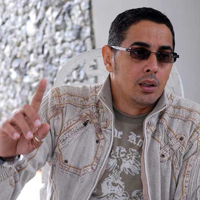
Paulito FG
Paulito FG, aka Pablo FG, aka Paulo FG, aka Pablo Alfonso Fernández Gallo, one of the central figures of Timba music, got his big career break when legendary musician Adalberto álvarez discovered and recruited him after recognizing his passion for singing. In 1990 he joined Opus 13 and in 1991 assumed leadership and turned it into Paulito FG y su Elite. Since then he has consistently been one of Cuba´s hottest performers captivating audiences of all ages, races and cultural backgrounds.
Paulito´s band, the élite, has always been exceptional, but in 1997 he assembled the truly amazing collection of musicians who collaborated to create one of Timba´s crown jewels, Paulito´s masterpiece, Con la conciencia tranquila. This album is definitely the starting point for those getting into Paulito´s music, or Timba music for that matter, for the first time. The release of Con la conciencia tranquila has historical importance due to the many musical trends it set.
The creative chemistry of this highly–disciplined and rigorously–rehearsed group was something to behold. Con la conciencia tranquila is the perfect amalgamation of Paulito´s songs, Ceruto´s arrangements, and the ultra–creative rhythm section hooks of Noroña, the two Joeles, Yosvel Bernal and wonderfully melodic conguero, Tomás Cruz. And as a performing unit, the élite of 1997 could go head to head with the monster Issac Delgado group that recorded Rarities. If one were blessed with a Timba Time Machine, its default setting would have to be 1997. On any given night, Havana´s blazing nightclub scene might feature the Charanga Habanera of “Tremendo delirio,” the Los Van Van of “Esto te pone la cabeza mala,” the Manolín band of “De buena fe,” the Bamboleo of “Yo no me parezco a nadie,” the Klimax of “Juego de manos” and of course the twin juggernauts of Issac and Paulito. Incredibly, 1997 witnessed what was arguably the greatest incarnation of each of these seven groups.
Manolito y su Trabuco
Founded on February 25, 1993, and having already started to develop their style when various key members were part of Maravillas de Florida, Manolito y su Trabuco was one of the first timba bands, but it wasn´t until the second wave, in 1995, that they released their first album, Directo al corazón. In 2006, about to release their 7th album, Hablando en serio, they enjoyed a gradual and steady rise in popularity and are now generally considered to be among the top timba bands in Havana.
We strongly recommend that you see this band live if humanly possible. Like Issac Delgado, Manolito y su Trabuco is one of those bands that you have to see live to fully appreciate how great they are—one of the tightest and most powerful ensembles on the planet. They tour Europe regularly and keep threatening to extend their touring to the US. For those who love traditional Cuban music and are nervous that Timba is a bit too modern for their tastes, Manolito provides the clearcut entryway to the glories of Cuban music in the 90´s and 00´s. They combine the authentic flavor of Son with the raw, African fury of Timba in a way that leaves everyone deeply satisfied.
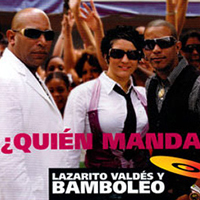
Lázaro Valdés y Bamboleo
With its beginnings in 1995, Bamboleo has become one of the most sought after Cuban groups within the last decade. Led by composer, arranger & pianist Lázaro Valdés Jr., they were immediately tagged as “cutting edge” due to their aggressive sound and funky, and avante–garde fashion sense. It is interesting to note they were the first hard–core timba band to make women the lead singers and main protagonists of their stage show; the female point of view has always been a key element to their sound.
As a result, Bamboleo has become a socio–cultural phenomenon, integrating a new style of dance, fashion and language into the Cuban culture. Their second and third albums, Yo no me parezco a nadie and Ya no hace falta are must–haves in any timba collection as they feature the hard–driving funky piano style of Valdés and the group´s tight, complex, and classy arrangements that mix orchestral and jazzy influences. They are known for the hottest and sweatiest weekday matinees (which are typically very crowded due to their ‘moneda nacional´ price) at Casa de la Música de Galiano. Don´t miss them.
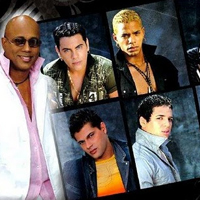
Lázaro Valdés y Bamboleo
With its beginnings in 1995, Bamboleo has become one of the most sought after Cuban groups within the last decade. Led by composer, arranger & pianist Lázaro Valdés Jr., they were immediately tagged as “cutting edge” due to their aggressive sound and funky, and avante–garde fashion sense. It is interesting to note they were the first hard–core timba band to make women the lead singers and main protagonists of their stage show; the female point of view has always been a key element to their sound.
As a result, Bamboleo has become a socio–cultural phenomenon, integrating a new style of dance, fashion and language into the Cuban culture. Their second and third albums, Yo no me parezco a nadie and Ya no hace falta are must–haves in any timba collection as they feature the hard–driving funky piano style of Valdés and the group´s tight, complex, and classy arrangements that mix orchestral and jazzy influences. They are known for the hottest and sweatiest weekday matinees (which are typically very crowded due to their ‘moneda nacional´ price) at Casa de la Música de Galiano. Don´t miss them.

Azúcar Negra
Azúcar Negra was formed in 1998 when Leonel Limonta, Haila Mompié (no longer with the band), and other musicians split off from Bamboleo . Limonta had written almost all of the material for Bamboleo´s brilliant second album, Yo no me parezco a nadie and Haila was one of the lead singers. Azúcar Negra created a great new arrangement of the title song and Limonta continued to pour his songwriting talent into the project. In 2001, after a number of world tours, they finally released their first studio album, Andar andando. Their second CD, Sin mirar atrás, was released in early 2004. In 2008, they released Exceso de equipaje, pictured above.
All of Azúcar Negra´s material is written by Limonta, who also wrote four huge hits for Charanga Habanera and two for Issac Delgado. Juan Carlos González said of Limonta, “He´s not a trained musician, but every song he brought in had some kind of special magic and became a huge hit.” Various bandmembers have contributed arrangements, such as Adalberto Domínguez, who is also once of Timba´s top bassists, a great pianist, and an absolute wonder to watch on stage.
In the years prior to the release of Andar andando, Azúcar Negra, like many Cuban bands, had a string of radio hits. The bands record relatively inexpensive demos and release them to Radio Taíno and other stations. In some cases, such as Paulito´s “La última Bala,” the demo winds up being better than the recorded version because of personal changes. In other cases, great songs are released as demos and then never officially released. Two of Timba´s greatest tracks fall into this category: Paulito´s “Laura” and Azúcar Negra´s “Almas disfrazadas.” Azúcar Negra released four of its demos to mp3.com, including “Almas disfrazadas” but the site is now defunct and the single is no longer available. The other two songs are on Andar andando. Click on our DISCS button above to learn more about Azúcar Negra´s discography.
Azúcar Negra is an extremely well–rehearsed band whose live show is full of interesting medleys and segues. They´re definitely a thrill to see live. They only have the two albums, but they´re so packed with great music that we count them among the upper echelon of Timba bands, especially considering the past accomplishments of Limonta.

Charanga Forever
Charanga Forever was formed in the summer of 1998 as a result of the famous breakup of Charanga Habanera. The original members of the group were all formerly in Charanga Habanera and the early parts of their careers are covered in great depth in our now completed section on the four albums of the original Charanga Habanera: Hey you, Loca, Pa´ que se entere La Habana and Tremendo delirio. The story of the breakup and the early years of Charanga Forever is covered in the article “Charanga Habanera: The Breakup and Beyond.”
We also have a long article written by former Charanga Forever pianist/arranger Juan Carlos González, and an interview with former bassist/leader Pedro Pablo Gutiérrez. Both of these articles are available in English and Spanish. Finally, we have Allan Johnston´s article, “The Bass Style of Pedro Pablo Gutiérrez.” Pedro Pablo is now the leader of Rebambaramba, one of the strongest new groups of the 2000s.
Juan Carlos González and Michel Maza returned briefly in 1999, recording one excellent 7–track CD (see Discography). Original members gradually departed throughout the 2000s but the new members have been very promising and two excellent Envidia CDs have been released.

Haila
Haila María Mompié is the most charismatic and attractive female lead singer in timba. But Haila´s success is more than a result of her good looks. When Haila walks onto a stage, all eyes turn to her. She possesses the indefinable “It” that separates stars from competent singers. This charisma in combination with her voice has made her one of the undisputable divas of Cuban music.
In 1998 Yo no me parezco a nadie clearly established both Haila and Bamboleo as major forces in the world of Timba. Nearly every song on this truly great album was arranged by leader Lázaro Valdés and written by Leonel Limonta, whose brilliant lyrics and soulful melodies created a powerful and unique chemistry with Valdés´s dramatic R&B and Jazz fusion–laced arrangements. Limonta had already written a string of indispensable hits for Charanga Habanera and Issac Delgado, but with Yo no me parezco he got a chance create an entire album and it turned out to be one of the great classics of the Timba genre. The title track became Haila´s signature song, and she turned in an equally brilliant performance on the album´s finale—“Con un canto en el pecho.”
In Bamboleo, Haila was teamed with another of Cuba´s most important female vocalists, Vannia Borges. They were electrifying on stage, but they were more than just divas. As coristas they had an exquisite blend which attracted the attention of no less that Manolín, el Médico de la Salsa, who used them on his 1997 masterpiece, “De buena fe.”
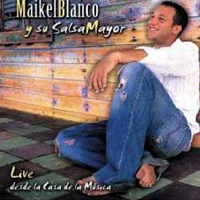 Maykel Blanco y su Salsa Mayor
Maykel Blanco y su Salsa MayorMaykel Blanco is one of the most talented young musicians in Cuba today. An excellent percussionist and pianist, he is also a talented composer and producer and at the age of 26 (at the time of this article) he is director of one of the fastest rising bands on the Timba scene: Maykel Blanco y Su Salsa Mayor.
Maykel has been heavily influenced by classic timba such as NG La Banda, La Charanga Habanera and Los Van Van. In his early years, Maykel was part of such groups as Gen–Cortés, Abel y La Seducción and La Constelación before founding his first group at the tender age of 15. At 18 he started Maykel Blanco y La Suprema Ley. Maykel released one album with Suprema Ley, Llegaron los cubanos (Envidia 2003), composed and produced by Maykel himself. Llegaron los cubanos has a strong base in son, but also ventures into aspects of rumba and the elements we expect in timba such as gear changes and “attitude.” One of the featured singers is Tirso Duarte and Maykel returned the favor by playing timbal on Tirso´s CD, Si la vida te dice baila (Envidia 2004). My personal favorite from Llegaron los cubanos is “El veterano, which Salsa Mayor performs in the potpurri on the upcoming live album (Envidia 2007).
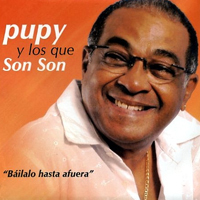
César “Pupy” Pedroso
César “Pupy” Pedroso (aka “Pupi Pedroso”) is one of the key figures not only in Timba, but in the last 40 years of Cuban pop music. As well as being one Cuba´s best and most prolific composers, he played a seminal role in revolutionizing the art of salsa piano playing.
He started with Orquesta Revé and then became a founding member of Los Van Van. In the summer of 2001, he left to form his own group, Pupy y los que son son, which has now released four of the best CD´s of the decade.
“De Roldofo Cárdenas y Pupy Pedroso” by Ilán Greenfield. One of Pupy´s favorite collaborators was the late great lyricist Rodolfo Cárdenas, who wrote such LVV classics as “Que le den candela.” Be sure to read (and listen to) Ilán´s moving retrospective of this great musical partnership.


